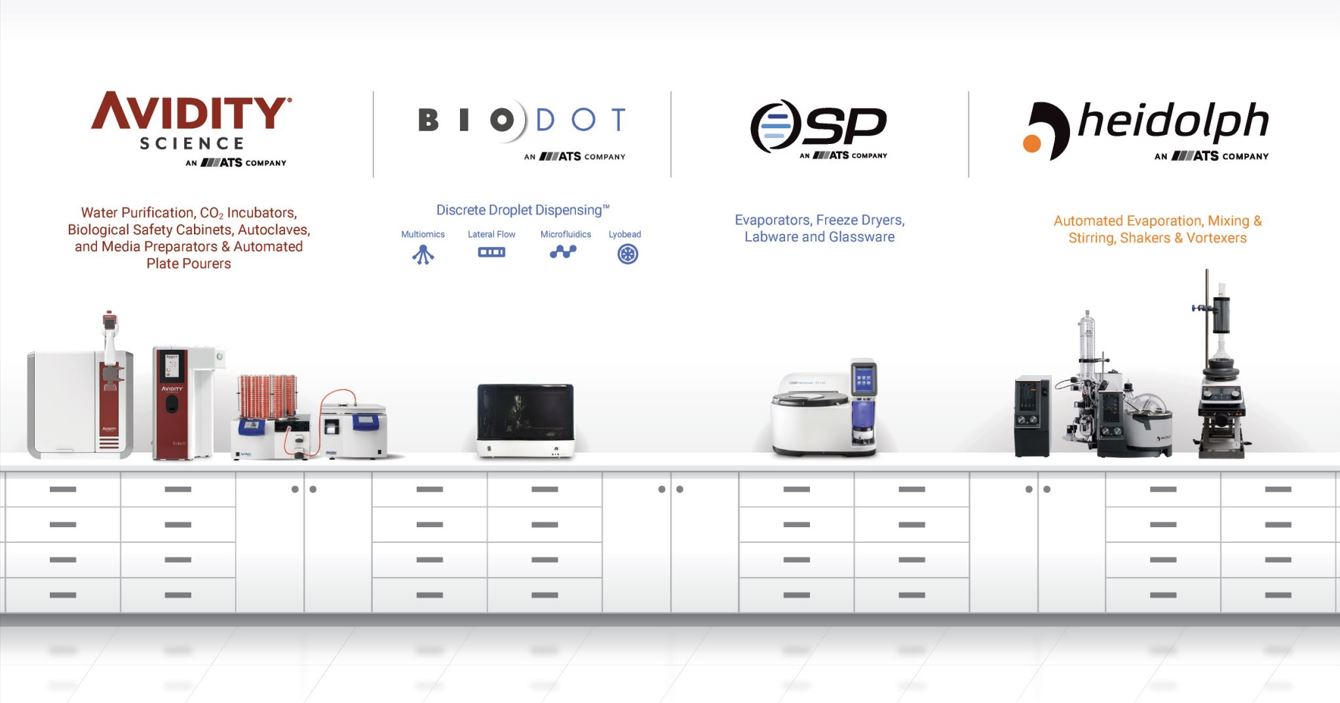Crafting Precision: The Behind-the-Scenes of Biosensor Technology

For over three decades, BioDot has been at the forefront of liquid handling innovation, fueling revolutionary breakthroughs in scientific research and empowering the discoveries that are shaping the future.
Among BioDot’s cutting-edge specialties is the development of advanced biosensors, pushing the boundaries of what’s possible in diagnostics and beyond. Biosensors made using BioDot instruments have been involved in measuring antibacterial agents in food,1 creating DNA biosensors as an alternative to PCR2, and measuring lactate in breath.3 These innovative devices can also serve a remarkable variety of other uses, including monitoring blood glucose levels, diagnosing cancers, and sniffing out environmental pollutants.
All biosensors share two core components:
- A biological sensing element that interacts with the analyte (the substance you want to detect). This can take the form of a variety of biochemistries, including antibodies, nucleic acids, and enzymes.
- A base transducer that converts that biological response into a measurable signal. Typically, the reaction by the sensing element creates an electromagnetic or chemical byproduct that can then be detected and amplified.
Let’s look at how to make one with a BioDot instrument!
Cooking with Biosensors 101

Step 1: Prepare the base transducer
Start with a plastic sheet to serve as a base and print your components onto it, including:
- Carbon/graphite mix
- Conductors
- Referene electrode
- Insulators/dielectrics
Step 2: Dispense the biological sensing element onto the transducer
Most sensing elements are delicate biological materials. Traditional screen-printing processes can risk damaging your (often expensive) sensing elements.
But BioDot’s proprietary BioJetTM non-contact dispenser, can dispense DNA, enzymes, and other biologicals “on-the-fly”, with no loss in time or dispensed material.
Step 3: Cut individual sensors into cards from the base material
BioDot’s rotary and guillotine cutters, such as our CM5000, can cut with a variety of blade options to suit any specific material that you want to incorporate into your manufacturing process.
Thinking of Scaling Up?
At BioDot, we provide an extensive array of platforms featuring our cutting-edge liquid handling technologies. Researchers can seamlessly scale their concepts from benchtop experiments to pilot production and full-scale manufacturing.
We offer high-speed systems for manufacturing glucose biosensor sheets. In under 30 seconds, our instruments can dispense 250 sensors with a robotic symphony of stacking, pick-and-place maneuvers, pinpoint material dispensing, and drying.
With BioDot’s quantity, you also get quality! Our systems include internal quality control: our horizontal vision detection systems optimize drop size and volume in real-time, and our vertical vision detection systems analyze the surface of your biosensor for droplet position. We also provide customizable options such as additional dispensers, orientations, and worktable configurations, tailored to meet the unique needs of specialized biosensors requiring extra attention.

Final Thoughts
Interested in leveraging BioDot’s cutting-edge systems for designing or manufacturing your own biosensors? Contact us today to discuss feasibility and explore how our technology can elevate your projects to new heights. We look forward to collaborating with you on your next innovation!
References
- Le, T., Xie, Y., Zhu, L., & Zhang, L. (2016). Rapid and sensitive detection of 3-amino-2-oxazolidinone using a quantum dot-based immunochromatographic fluorescent biosensor. Journal of agricultural and food chemistry, 64(45), 8678-8683.
- Chua, A., Yean, C. Y., Ravichandran, M., Lim, B., & Lalitha, P. (2011). A rapid DNA biosensor for the molecular diagnosis of infectious disease. Biosensors and Bioelectronics, 26(9), 3825-3831.
- Zhang, Shulin, and Danny O'Hare. "Biosensor for Rapid Measurement of Lactate in Exhaled Breath Condensate." Electrochemical Society Meeting Abstracts 244. No. 63. The Electrochemical Society, Inc., 2023.
About the Author

Wesley Thio is an Associate Product Marketing Manager at BioDot Inc. He obtained his B.S in Electrical and Computer Engineering at The Ohio State University and his M.S in Electrical and Computer Engineering at the University of Michigan. His research in chaotic circuits, battery technology, and AI accelerator hardware has led to over a dozen publications, multiple patents and co-authorship of the textbook Elegant Circuits: Simple Chaotic Oscillators. He received Ohio State’s Next Generation Innovator award in 2018.





